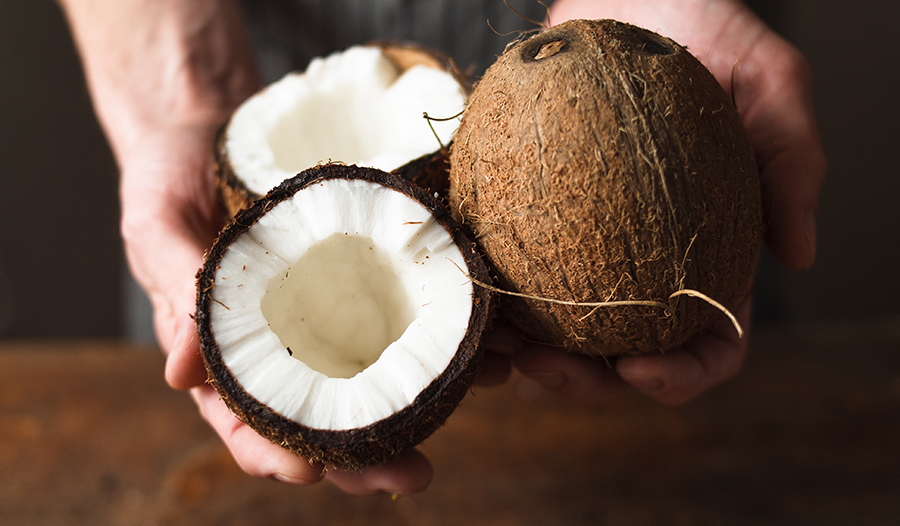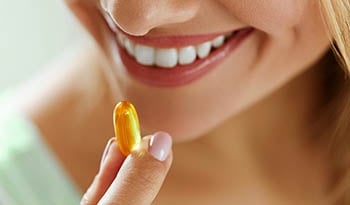Monolaurin: Why Supplement with this Natural Antimicrobial?
DISCLAIMER:This blog does not intend to provide diagnosis...
- In this article:
- Monolaurin’s Natural Antimicrobial Effects
- Monolaurin Inhibits and Destroys Biofilm
- Monolaurin Exerts Significant Action Against Candida Albicans
- Monolaurin Recommended Dosage:
- Is Monolaurin Safe?

Monolaurin is a fat that is found in breast milk where it appears to play a role as a naturally-occurring antiseptic. It is also found in coconut oil and can also be formed in the human body from lauric acid, which typically composes about 50% of the fat present coconut oil.
Monolaurin, also known as glyceryl monolaurate or glyceryl laurate is also available as a dietary supplement. Its anti-infective properties have been known for over 50 years, but there has been a flurry of recent studies looking at its antiviral and antibacterial effects.
Monolaurin’s Natural Antimicrobial Effects
Many viruses, as well as bacteria and protozoa (parasites), are enveloped by a protective membrane composed of fatty substances (lipids). Current research indicates that monolaurin destroys these pathogens by dissolving the lipids in the fatty envelope surrounding the organisms. In other words, Monolaurin basically disintegrates the organism’s protective shield causing it to be easily destroyed by the immune system.
Recent studies also show that monolaurin has another mechanism in killing some bacteria by interfering with the bacteria’s ability to interact with the cells it is trying to infect.
Monolaurin also kills or inactivate a number of fungi, yeast, and protozoa including Candida albicans, several species of ringworm, and Giardia lamblia.
Monolaurin Inhibits and Destroys Biofilm
Biofilm refers to a slimy, gluey matrix of bacteria or yeast closely packed together that adhere to surfaces including the lining of the small intestine. In general, biofilm-forming yeast and bacteria are often difficult to get rid of. Basically, these organisms form the biofilm when they are threatened. It is a survival mechanism and it is one of the main factors that lead to an organism becoming resistant to an antibiotic. It is like they are forming a barricade to protect themselves. It is one of the reasons why when yeast or bacteria overgrow in the small intestine as occurs in SIBO (small intestinal bacterial overgrowth) that antibiotics do not really solve the problem. The bacteria form the biofilm and wait until the environment is clear of the antibiotics and safe for them to grow again. Monolaurin has been shown to be very effective at dissolving the biofilm matrix exposing the bacteria or yeast to the natural factors that keep the small intestine relatively microbe-free.
Biofilm forming bacteria and yeast that overgrow in the intestines are usually associated with significant gas and bloating. Although no clinical studies exist, if this effect of monolaurin is as effective in our body as it is in experimental models it would be a significant breakthrough.
Monolaurin Exerts Significant Action Against Candida Albicans
Candida albicans is a normal inhabitant in the human body. A recent 2018 study (Biol Pharm Bull. 2018;41:1299-1302) highlighted the antifungal activity of monolaurin against Candida albicans biofilms in mice by using an engineered form of C. albicans that displays fluorescence (glowing) under the right light. The antifungal activity of monolaurin was determined by comparing mice treated with a placebo, monolaurin, or the an antifungal drug (nystatin). Results showed that oral topical treatments of monolaurin were nearly as effective as nystatin and exerted a significant effect in the ability of C. albicans to form biofilm. The conclusion of the study says it all “The overall microbiology analysis of the ex-vivo tongue samples confirmed the efficacy of monolaurin as a potent antifungal therapeutic agent.”
The clinical effects of monolaurin was evaluated in women with vaginal infections due to C. albicans or the bacteria Gardnerella vaginalis (Antimicrob Agents Chemother. 2010;54:597-601). Vaginal infections due to these organisms are quite common with many becoming chronic or recurrent. Since monolaurin exerts activity against both organisms, a randomized, double-blind study was designed to investigate the effects of monolaurin on the vaginal microflora. Women self-administered intravaginal gels containing 0%, 0.5%, or 5% monolaurin every 12 hours for 2 days. Vaginal swabs were collected before and immediately after the first gel administration and 12 h after the final gel administration. Swabs were tested for Lactobacillus, Candida, G. vaginalis. Monolaurin had not effect on vaginal pH, but was effective at significantly reducing both Candida and G. vaginalis without affecting vaginal Lactobacillus concentrations.
These two studies mentioned above are significant for several reasons, most importantly it shows that the antimicrobial effects that monolaurin produces in cell and test-tube studies are translated into studies in animals and humans. If this holds true for all of the microorganisms that monolaurin shows activity against, particularly the viruses, then monolaurin would be a significant medical advance.
Monolaurin Recommended Dosage:
The general recommendation with monolaurin as a dietary supplement is to start with 750 mg of monolaurin two to three times per day for one week, then increase the dosage to 1,500 mg two-three times per day for another week. If needed, the dosage can be increased to 3,000 mg two to three times per day. Generally use is discontinued when there is no longer an obvious need.
Is Monolaurin Safe?
Monolaurin is generally recognized as safe (GRAS) by the United States Food and Drug Administration (FDA). It is actually being used in a relatively high dosage in animal feed as a natural antimicrobial. Interestingly, it spares its antimicrobial effect on important health-promoting gastrointestinal bacteria. Though apparently very safe, nonetheless monolaurin should be avoided during pregnancy and breastfeeding due to a lack of safety data.

 By Dr. Michael Murray, N.D.
By Dr. Michael Murray, N.D. 


